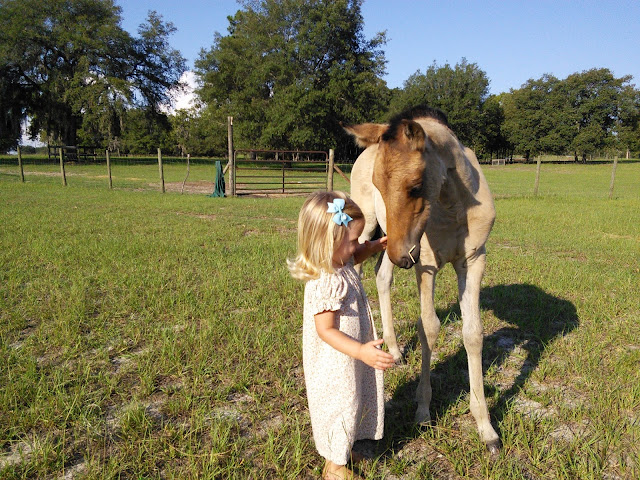She was broken to lead by the time she was two weeks old, and has been sacked out quite a bit with various objects.
Walks over tarps, through shallow running water, through brush, etc. We have ponied her alongside out on the trails a couple times, and she loves it.
Fenella is very well built. She has a lovely refined face, straight, clean legs, broad chest, strong shoulders, and powerful hindquarters. She is very well proportioned, and should look a lot like her sire when she is grown. She is very spirited and fast, and loves to run.
I am only selling her because our land simply can't support very many animals. I have been gentling her as if I were going to keep her as my personal riding horse, and plan to continue this as long as she is here.
I plan to hold her (with a deposit) until she is 6 months old, unless otherwise requested by the buyer.
Basic info:
Name: Fenella de Festina Lente
Date of Birth: May 2, 2015
Sire: Jesse el Rubio
Dam: Acuarela de Benji
Color: Red dun, with frosted mane and tail
Probable mature height: 14.3 hands high
Asking $3,500
For more information, please email, call or text 342-745-3576.
Jesse el Rubio, Fenella's sire. Jesse is the son of the prestigious El Chino de El Batey, grandson of Capuchino. He is very well gaited and has a wonderful temperament. (See video at the bottom of the page, and read this blog post about our visit to him.)
Acuarela de Benji, Fenella's dam (affectionately known as Fannie.)
Fannie's bloodline includes both Plebeyo and Capuchino. She is a very special mare!







Comments
Post a Comment
Hi there! I love it when you leave comments on my posts, but they will be moderated since this is a public blog and I do not know who will be reading it. I request that only decent, ordinary English be used in comments, as I do not really understand other languages, and do not wish to read slang or strong language.
"Let no unclean communication proceed out of your mouth" Eph. 4:29
Feel free to ask questions, and I will answer them to the best of my ability, and post the questions and answers on here to be a help to others.
Thank you! I am looking forward to hearing from my readers!